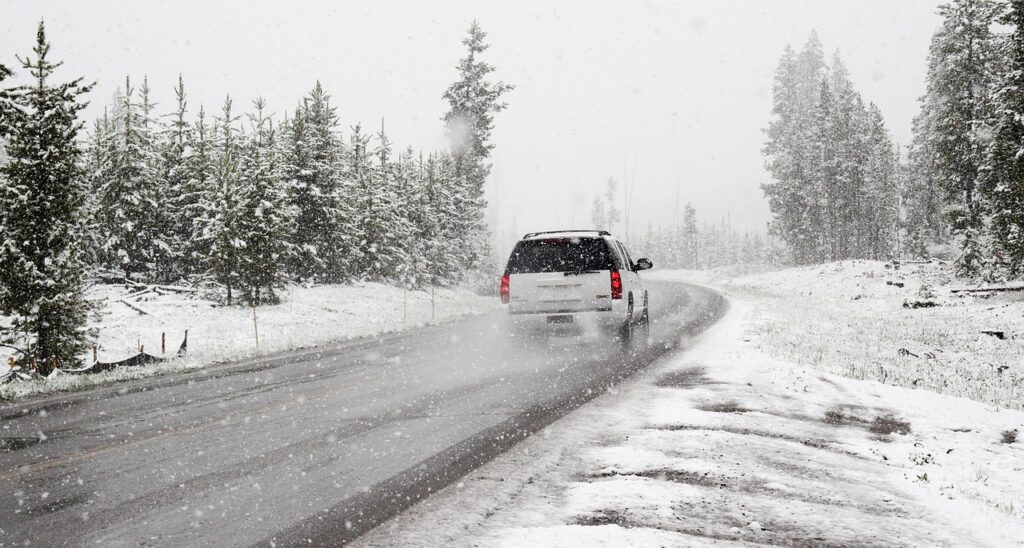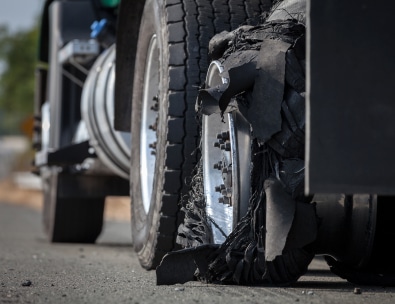 When you open your drapes in the morning, you’re greeted by a fresh coat of snow on the lawn. While you might rejoice at the opportunity to spend more time with your family and celebrate important holidays during the winter, you’re likely not excited to head out on the road in your vehicle. Thankfully, familiarizing yourself with a few winter driving safety tips can ease your anxiety and help to ensure that you arrive at your destination safe and sound.
When you open your drapes in the morning, you’re greeted by a fresh coat of snow on the lawn. While you might rejoice at the opportunity to spend more time with your family and celebrate important holidays during the winter, you’re likely not excited to head out on the road in your vehicle. Thankfully, familiarizing yourself with a few winter driving safety tips can ease your anxiety and help to ensure that you arrive at your destination safe and sound.
Clear Ice and Snow from Your Car
Before you head out in your car, make sure that the windshield and all windows are completely free of ice. Maintaining the highest level of visibility possible will help you stay safe while on the road. You should also be sure to remove snow from the top of your car, as it can slide down from the roof when you stop, blocking your vision or those of drivers behind you.
Increase Your Following Distance
When driving on snowy or icy roads, it’s essential that you leave at least three times more space than usual between yourself and the car in front of you. It takes a lot longer to stop on an icy road, so you run the risk of rear-ending another vehicle if you follow too closely. Remember that you should also break gently to avoid losing traction and spinning out.
Stay Away from Big Rigs, Plows and Other Vehicles
It’s always a good idea to give semi trucks, plows and other large vehicles plenty of space on the road. During the winter, it’s especially important that you stay away from them. You don’t want to be in the way if a large truck spins out or if a semi stalls on an icy hill.
Use Low Gears and Avoid Cruise Control
For those who drive manual transmissions, staying in low gears is a great way to increase your traction on the road. Opt for low gears when climbing or descending hills. In addition to increasing your traction, you’ll also have better control over your movement on the road and will be able to stop more efficiently. Avoid using cruise control on icy roads; it’s better to control your speed yourself, so that you can respond quickly to changes in conditions.
Carry Chains, A Shovel and Warm Clothing
No matter how far you have to drive during the winter, it’s always a good idea to carry chains. If you’re headed out for a long trip, call the highway patrol or roads department in your area to find out about road conditions and chain requirements. If chains are required, put them on before you leave. Keep a shovel, gloves and warm clothing in your car in case you need to chain up on the side of the road.
Of course, if you’ve been involved in a winter accident, it’s a good idea to contact a licensed attorney. Here at Brown Chiari, we can guide you through the insurance claims process and will help you seek compensation if you are injured during an accident.

 When you open your drapes in the morning, you’re greeted by a fresh coat of snow on the lawn. While you might rejoice at the opportunity to spend more time with your family and celebrate important holidays during the winter, you’re likely not excited to head out on the road in your vehicle. Thankfully, familiarizing yourself with a few winter driving safety tips can ease your anxiety and help to ensure that you arrive at your destination safe and sound.
When you open your drapes in the morning, you’re greeted by a fresh coat of snow on the lawn. While you might rejoice at the opportunity to spend more time with your family and celebrate important holidays during the winter, you’re likely not excited to head out on the road in your vehicle. Thankfully, familiarizing yourself with a few winter driving safety tips can ease your anxiety and help to ensure that you arrive at your destination safe and sound. Trucking is one of the deadliest occupations. Although fatal auto accidents have decreased due to improvements in highway safety, these statistics are likely to rebound as more trucks take to the roads in New York and across the country. Today, trucks claim more than 80 percent market share in the commercial transportation industry, which includes air, sea and rail transport methods. All of this business earns trucking companies over $650 billion each year and earnings are projected to grow 20 percent in the next decade.
Trucking is one of the deadliest occupations. Although fatal auto accidents have decreased due to improvements in highway safety, these statistics are likely to rebound as more trucks take to the roads in New York and across the country. Today, trucks claim more than 80 percent market share in the commercial transportation industry, which includes air, sea and rail transport methods. All of this business earns trucking companies over $650 billion each year and earnings are projected to grow 20 percent in the next decade.